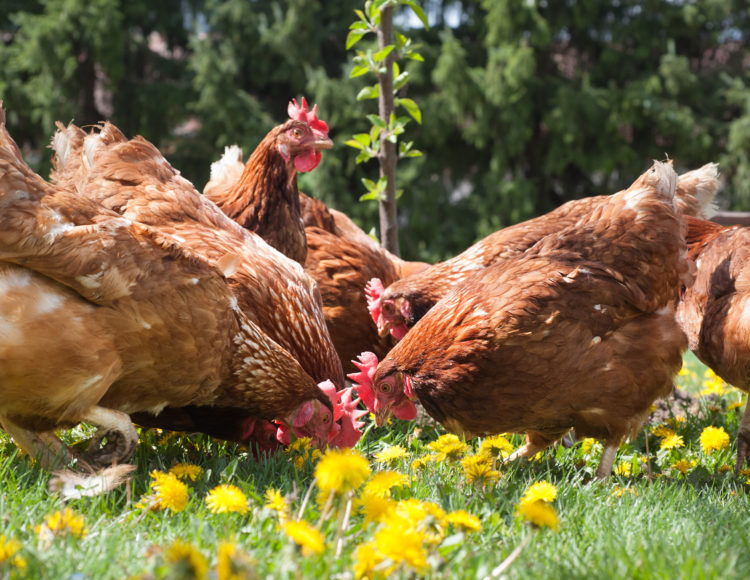There were nearly 35 million laying hens in the UK in 2012 with 31 million eggs being eaten every day.
Egg production and welfare
- Hens are taken from breeding farms when they are 18 to 20 weeks old.
- Each hen can produce up to 300 eggs per year.
- All egg production systems involve the killing of unwanted male chicks at one-to-three days old.
- Enriched cages have replaced battery cages which have more space and facilities, but they still restrict natural behaviours.
- Overcrowding, frustration and stress can lead caged hens to feather pecking and cannibalism, therefore beak trimming is required. This is a painful procedure.
- Constant demand for calcium required to produce eggs results in weak, brittle bones which are prone to fracture.
- Nearly half (48%) of eggs produced in the UK are from free range systems.
Disease
Caged hens can be prone to a number of diseases, due to overcrowding, such as avian coccidiosis, bacterial infections, bronchitis, leukosis, egg peritonitis and damage to their feet and claws can cause foot infections.
Transport and slaughter
Few slaughterhouses accept laying hens so they are frequently transported by road for long distances. Catching and transporting hens can cause painful bone fractures because they are easily startled and become frantic, flapping their wings.
After 12 months, as their egg production declines, layer hens are considered ‘spent’ and slaughtered. Some layer hens are slaughtered by exposure to gas on the premises where they were housed. Those that go to the slaughterhouse are hung upside down and dragged through an electrically charged water bath, rendering them unconscious before their necks are cut.

